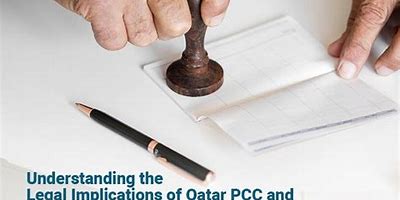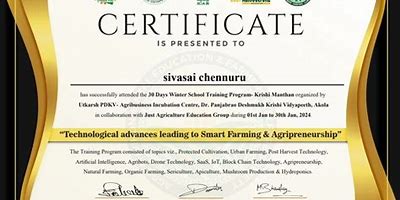
The "Copy Certification By Document Custodian Form" is a critical tool in legal, business, and governmental contexts. It provides assurance that a copy of an original document is a true and accurate representation of the original, and it does so under the authority and responsibility of the document's custodian. This process adds a layer of security and credibility to document handling, preventing fraud and ensuring that important information is accurately represented. Without proper certification, copies may be questioned in terms of their authenticity and accuracy, potentially leading to legal or business disputes. The form itself serves as a declaration, signed by the custodian, affirming that the copy matches the original in every material aspect. This meticulous attention to detail is essential when presenting copies of documents in scenarios where the original is unavailable or impractical to produce. Therefore, understanding the proper use and implications of this form is paramount for anyone involved in document management or legal proceedings.
WATCH
Understanding the Role of a Document Custodian

The document custodian is the individual or entity responsible for the care, control, and maintenance of records. This role carries significant weight, as the custodian is entrusted with safeguarding the integrity and authenticity of vital documents. Their responsibilities extend beyond simple storage; they involve ensuring documents are accessible when needed, protecting them from damage or unauthorized alteration, and adhering to legal and regulatory requirements related to document management. In the context of a "Copy Certification By Document Custodian Form," the custodian plays a crucial role in verifying that the copy presented is a true and accurate reflection of the original document. This verification process often includes a meticulous comparison of the copy against the original, ensuring that all details, signatures, and any amendments are accurately reproduced. The custodian's signature on the certification form serves as a legal attestation to this fact, providing assurance to recipients of the copy regarding its reliability and trustworthiness.
WATCH
Key Elements of the Certification Form

The "Copy Certification By Document Custodian Form" typically includes several key elements designed to ensure its validity and enforceability. These elements serve to clearly identify the document being certified, the custodian making the certification, and the basis for the certification itself. Crucially, the form should include:
Document Identification: A clear and specific description of the document being copied, including its title, date, and any reference numbers.
Custodian Information: The name, title, and contact information of the document custodian.
Certification Statement: A statement affirming that the copy is a true, accurate, and complete representation of the original document. This statement must be clear, unambiguous, and legally sound.
Signature and Date: The custodian's signature, along with the date the certification is made. This signature serves as the custodian's attestation to the accuracy of the copy.
Seal or Stamp (if applicable): If the custodian is acting on behalf of an organization, the form may also include a seal or stamp to further authenticate the certification.
Without these core elements, the certification may be deemed invalid or unreliable, undermining its intended purpose.
WATCH
Legal Implications of Certification

Certifying a copy of a document carries significant legal implications. The custodian, by signing the certification form, is essentially vouching for the accuracy and authenticity of the copy. This act can have legal consequences if the copy is later found to be inaccurate or fraudulent. The custodian could be held liable for damages resulting from reliance on the inaccurate copy, particularly if it was used in legal proceedings or business transactions. Furthermore, deliberately providing a false certification could result in criminal charges, such as perjury or fraud. The legal weight of a certified copy often allows it to be admitted as evidence in court, serving as a substitute for the original document. However, the opposing party still retains the right to challenge the authenticity or accuracy of the copy, potentially triggering further investigation or scrutiny of the custodian's certification process. Therefore, custodians must exercise due diligence and take reasonable steps to ensure the accuracy of any copies they certify.
WATCH
Situations Requiring Copy Certification
There are numerous situations where a "Copy Certification By Document Custodian Form" is required. These scenarios often arise in legal, financial, or administrative contexts where the original document is unavailable or impractical to produce, and where assurance of the copy's accuracy is essential. Some common examples include:
Legal Proceedings: Courts often accept certified copies of documents as evidence, especially when the original is lost or difficult to obtain. This applies to contracts, deeds, wills, and other legal documents.
Financial Transactions: Banks and other financial institutions may require certified copies of documents to verify identity, ownership, or financial status. Examples include loan applications, mortgage documents, and investment agreements.
Government Agencies: Various government agencies require certified copies for administrative purposes, such as applying for permits, licenses, or benefits. These may include birth certificates, marriage licenses, and tax returns.
Academic Institutions: Schools and universities may require certified copies of transcripts, diplomas, or other academic records for admission or enrollment purposes.
International Transactions: When conducting business or legal transactions across borders, certified copies of documents are often required to comply with foreign regulations and ensure authenticity.
In each of these situations, the certification form provides a necessary level of assurance that the copy is a reliable representation of the original, facilitating smoother and more trustworthy transactions.
WATCH
Best Practices for Custodians

To ensure the integrity and legal validity of copy certifications, document custodians should adhere to certain best practices. These practices minimize the risk of errors, fraud, and legal challenges. Some key recommendations include:
Verify the Original: Always compare the copy meticulously against the original document to ensure accuracy. Check for discrepancies in text, signatures, dates, and any other relevant details.
Use High-Quality Copies: Ensure that the copy is clear, legible, and free from distortions. Use high-resolution scanning or photocopying equipment to produce accurate reproductions.
Document the Certification Process: Maintain a record of the date, time, and method of certification. Note any individuals who witnessed the certification or were involved in the process.
Secure the Original Document: After making the copy, safeguard the original document to prevent unauthorized access, alteration, or loss.
Understand Legal Requirements: Familiarize yourself with the legal requirements for copy certification in your jurisdiction. Consult with legal counsel if you have any doubts or questions.
Train Staff: If you are responsible for overseeing a team of document custodians, provide thorough training on proper certification procedures and best practices.
By following these guidelines, custodians can uphold their responsibilities and ensure the reliability of certified copies.
WATCH
Risks of Improper Certification
Improperly certifying a document copy can lead to a range of risks and negative consequences, affecting both the custodian and the relying parties. These risks underscore the importance of meticulous attention to detail and adherence to best practices. Some potential pitfalls include:
Legal Liability: As previously mentioned, custodians can face legal liability for damages resulting from inaccurate or fraudulent certifications. This could involve financial penalties, lawsuits, or even criminal charges.
Reputational Damage: Providing unreliable certifications can damage the custodian's reputation and credibility, potentially leading to loss of business or professional opportunities.
Invalid Legal Proceedings: If a certified copy is challenged and found to be inaccurate, it may be excluded from evidence in legal proceedings, undermining the case for the relying party.
Financial Losses: Reliance on an improperly certified copy can lead to financial losses for individuals or organizations involved in transactions based on the document. For example, a faulty property deed could result in a loss of ownership rights.
Administrative Sanctions: Government agencies or regulatory bodies may impose sanctions on custodians who provide inaccurate certifications, such as fines, license suspensions, or other penalties.
Avoiding these risks requires a commitment to accuracy, diligence, and ethical conduct in the
certification process.
WATCH
Technological Advancements in Copy Certification

Technology is increasingly playing a role in enhancing the efficiency and security of copy certification processes. Digital tools and platforms are emerging that can streamline the certification process, reduce the risk of errors, and improve overall document management. Some notable advancements include:
Digital Signatures: Electronic signatures provide a secure and verifiable way to authenticate certified copies. Digital signatures use cryptographic techniques to ensure the integrity of the document and verify the identity of the signer.
Blockchain Technology: Blockchain can be used to create a tamper-proof record of document certifications. Each certification is recorded as a transaction on the blockchain, making it virtually impossible to alter or falsify the record.
Optical Character Recognition (OCR): OCR technology can automatically extract text from scanned documents, allowing for easier comparison and verification of copies against originals.
Document Management Systems (DMS): DMS platforms provide centralized repositories for storing and managing documents, facilitating easier access, version control, and certification.
Remote Online Notarization (RON): RON platforms allow notaries to remotely witness and certify documents online, providing a convenient and secure alternative to traditional notarization.
These technological advancements are transforming the way documents are certified, offering greater efficiency, security, and accessibility.
WATCH
The Future of Document Certification

The future of document certification is likely to be shaped by continued technological innovation and evolving legal and regulatory frameworks. We can anticipate several key trends:
Increased Automation: Automation will play an increasingly significant role in the certification process, reducing manual effort and minimizing the risk of errors. AI-powered tools may be used to automatically verify document accuracy and identify potential discrepancies.
Enhanced Security: Security will remain a top priority, with ongoing efforts to develop more robust and tamper-proof certification methods. Blockchain and other advanced security technologies will likely become more widely adopted.
Greater Accessibility: Remote online notarization and other digital certification methods will continue to improve accessibility, making it easier for individuals and organizations to certify documents from anywhere in the world.
Standardization: Efforts to standardize document certification processes across different jurisdictions will help to reduce confusion and improve interoperability.
Focus on Compliance: Compliance with legal and regulatory requirements will remain a critical focus, with custodians needing to stay informed about evolving laws and best practices.
As technology continues to advance, document certification will become more efficient, secure, and accessible, playing an increasingly important role in legal, business, and governmental operations.
WATCH
Post a Comment for "Copy Certification By Document Custodian Form"